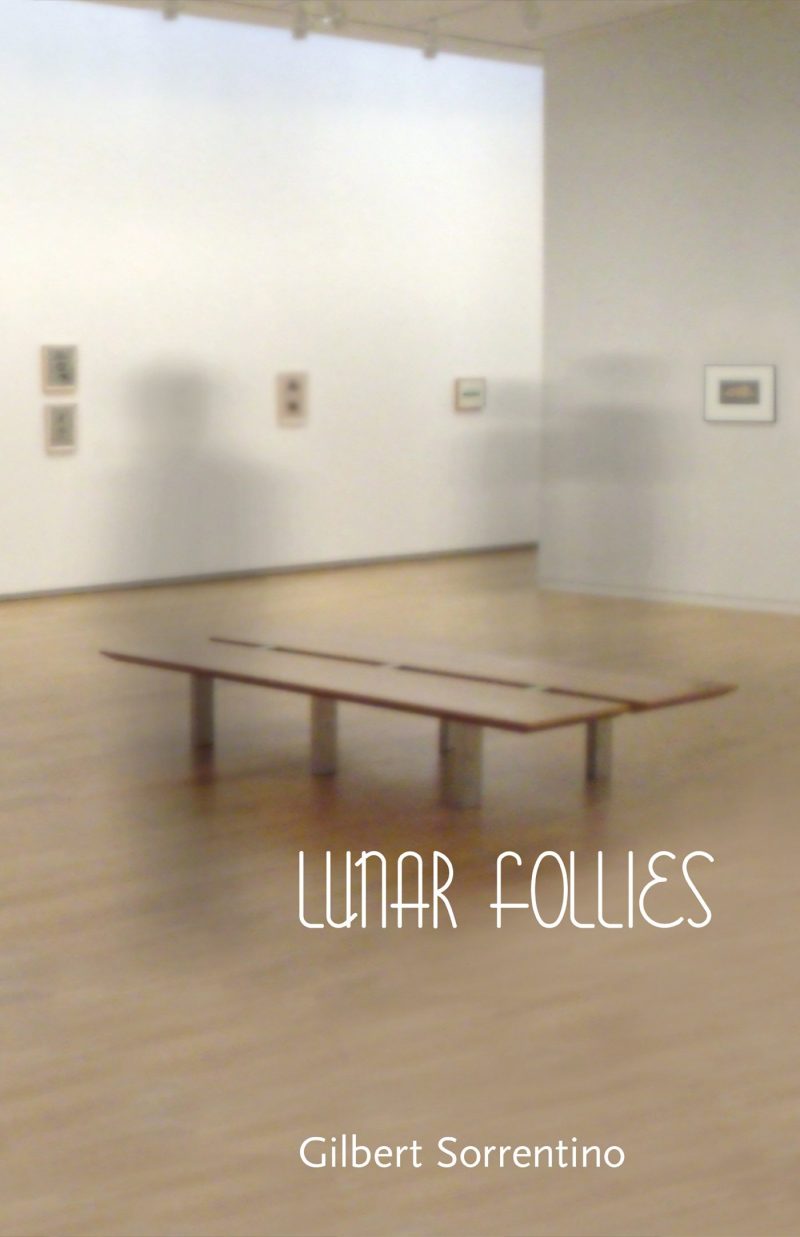Six hundred words on the most recent offering from Gilbert Sorrentino, a man now approaching his ninth decade? A brief review, precisely the sort of squib he makes look ridiculous? Lunar Follies pretends to be a compendium of such reviews, along with catalogue copy, publicity puffs, and other shorthand descriptions of artwork, artists, and their hangers-on. How can I show my appreciation without taking part in the sycophantic charade?
Nonetheless I must celebrate this man’s thirtieth book, a bravura feat of parody. Lunar Follies offers fifty-three self-contained art-world snippets, each one entirely the product of Sorrentino’s imagination and each depicting a creative venture that seems wearily familiar—that is to say, the pits. Through his reviewer’s witless gushing and hand-me-down blather (“strangely iconic and wholly sterile…”), we glimpse a repulsive nakedness made uglier by the industry’s lizardlike scramble after sex and bucks.
Sorrentino first visited this landscape decades ago, in his 1971 novel Imaginative Qualities of Actual Things, which skewers the “Art People” of ’60s New York.While devoid of plot in the ordinary sense, the book nonetheless built its narrative collage out of characters whose psychological revelations produced wincing sympathy as well as cultural insight (along with a lot of nasty fun). Lunar Follies is less a character-driven mosaic than it is a sword dance in which an assortment of pathetic creatures are hoisted on the same petard: now the patrons (“dot magic-george dot com you chumps”) and now the artists (“puddles of dirty, soapy water and a tarnished crown of false, or fool’s gold, set the tone of this installation”).
Every gallery visit is an idiot’s errand, and such dunderheaded repetition is one of Sorrentino’s defining tricks. The format also gives free rein to the author’s fondness for lists. Each follows its own pattern (for instance: nonphysical descriptive adjective, name, developing phrase or clause in conversational idiom, as in, “Exuberant Frankie Hips, who don’t mind moolanyans if they mind their fuckin’ business”). Indeed, the chapters have a simple alphabetic arrangement, but the title of each is a geographic feature of the moon.
The seemingly arbitrary systems of Lunar Follies challenge the search for the world’s hidden order; even so, a plain old linear reading of the book yields a kind of cli- max, with flickering but radiant connections to death and catharsis. Some of these intimations of mortality are funny, but some are quite sober. The book’s longest section is named for the man who mapped the planets, Copernicus; here the satire gives way to a description of bizarre games, the last of which may effect “the arrest of entropic forces.” What is narrative art, Sorrentino may be saying, but an otherworldly playing board on which we indulge the temporary folly that may arrest our own entropy?
An alternate interpretation would be to treat the Follies as a companion piece to Sorrentino’s novel, Little Casino (2002). That book assembled a collage from the ashes of working-class Brooklyn in the middle of last century, ashes this artist has been sifting since Steelwork in 1970. A ferocious sympathy defines this work, a realism that nuzzles us against the worst in his characters. Little Casino affirms the moral core in Lunar Follies, in which a frustrating brand of humanity drives Sorrentino to spit such excoriating fire. Regardless of how you interpret Lunar Follies, one observation is inescapable: as Sorrentino moves further from straight storytelling, he continues to generate new possibilities for prose fiction.
—John Domini





